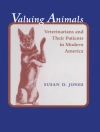From 1963 to 1965 roughly 6, 000 families moved into Rochdale Village, at the time the world’s largest housing cooperative, in southeastern Queens, New York. The moderate-income cooperative attracted families from a diverse background, white and black, to what was a predominantly black neighborhood. In its early years, Rochdale was widely hailed as one of the few successful large-scale efforts to create an integrated community in New York City or, for that matter, anywhere in the United States.Rochdale was built by the United Housing Foundation. Its president, Abraham Kazan, had been the major builder of low-cost cooperative housing in New York City for decades. His partner in many of these ventures was Robert Moses. Their work together was a marriage of opposites: Kazan’s utopian-anarchist strain of social idealism with its roots in the early twentieth century Jewish labor movement combined with Moses’s hardheaded, no-nonsense pragmatism.Peter Eisenstadt recounts the history of Rochdale Village’s first years, from the controversies over its planning, to the civil rights demonstrations at its construction site in 1963, through the late 1970s, tracing the rise and fall of integration in the cooperative. (Today, although Rochdale is no longer integrated, it remains a successful and vibrant cooperative that is a testament to the ideals of its founders and the hard work of its residents.) Rochdale’s problems were a microcosm of those of the city as a whole—troubled schools, rising levels of crime, fallout from the disastrous teachers’ strike of 1968, and generally heightened racial tensions. By the end of the 1970s few white families remained.Drawing on exhaustive archival research, extensive interviews with the planners and residents, and his own childhood experiences growing up in Rochdale Village, Eisenstadt offers an insightful and engaging look at what it was like to live in Rochdale and explores the community’s place in the postwar history of America’s cities and in the still unfinished quests for racial equality and affordable urban housing.
Innehållsförteckning
Introduction: When Black and White Lived Together1. The Utopian: Abraham Kazan
2. The Anti-Utopian: Robert Moses
3. The Birth of a Suburb, the Growth of a Ghetto
4. From Horses to Housing
5. Robert Moses and His Path to Integration
6. The Fight at the Construction Site
7. Creating Community
8. Integrated Living
9. Going to School
10. The Great Fear and the High-Crime Era
11. The 1968 Teachers’ Strike and the Implosion of Integration
12. As Integration Ebbed
13. The Trouble with the Teamsters
Epilogue: Looking Backward Notes
Selected Bibliography
Acknowledgments
Index
Om författaren
Peter Eisenstadt is editor of The Encyclopedia of New York State, associate editor of The Papers of Howard Washington Thurman, managing editor of The Encyclopedia of New York City, and executive board member of the New York Academy of History.












